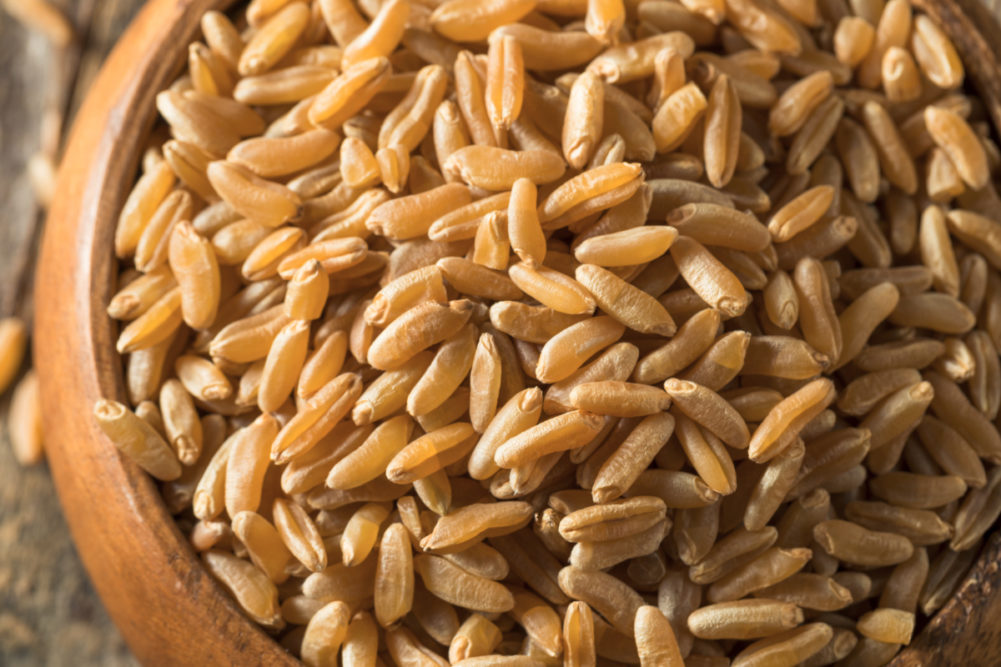 KANSAS CITY — Numerous influences have fueled a trend of consumers seeking to lessen or eliminate wheat intake, but probably none has been greater than a growing belief wheat varieties cultivated today do not confer the same healthful benefit as wheat grown in yesteryear.
KANSAS CITY — Numerous influences have fueled a trend of consumers seeking to lessen or eliminate wheat intake, but probably none has been greater than a growing belief wheat varieties cultivated today do not confer the same healthful benefit as wheat grown in yesteryear.
Perhaps no one has advocated this position to more deleterious effect for grain-based foods than William Davis, the author of the 2011 book “Wheat Belly.” Dr. Davis and others have claimed without evidence that the wheat kernels produced from semi-dwarf varieties are inferior to what was grown before the so-called green revolution.
“This thing being sold to us called wheat — it ain’t wheat,” Dr. Davis said. “It’s this stocky little high-yield plant, a distant relative of the wheat our mothers used to bake muffins, genetically and biochemically light-years removed from the wheat of just 40 years ago.”
While critics have called out Dr. Davis for the shoddy science underpinning his claims, the idea modern wheat is flawed appears to have gained currency far beyond the consumers who have read Dr. Davis’s books, seen him interviewed or visited his website. Even the growing popularity of ancient grains and heirloom wheat to some extent highlights suspicions that wheat and other high yielding crops that account for most of global grain production today somehow are suspect.
Fortunately, thanks to seed banks containing very old specimens, there is an opportunity to test this theory, and a group of scientists in the United Kingdom has done exactly that. A team led by Alison Lovegrove of the Plant Science Department of Rothamstead Research in Harpenden collected older wheat varieties, planted them and tested them.
Selected for the study were 39 bread wheat cultivars grown over a 230-year period, including 9 released between 1790 and 1916, 13 between 1935 and 1972 and 17 from 1980 to 2012. The seeds were grown over three successive seasons beginning with 2013-14 with the resultant production ground and measured in a test mill.
The researchers’ findings were straightforward and unsurprising.
“There is no evidence that the health benefits of white flour from wheat grown in the UK have declined significantly over the past 200 years,” the researchers said in their recently published findings. “In fact, increasing trends in several components, notably the major form of dietary fiber (arabinoxylan) are observed. This is despite great increases in the yields of wheat grown over this period.”
The researchers also noted higher content of betaine in modern wheat, a component thought to contribute to cardiovascular health. Asparagine, a precursor of acrylamide formed during baking, decreased.
The research is not the first to examine the claims of Dr. Davis. In 2013, the cereal chemist Donald D. Kasarda examined whether an increased incidence in celiac disease and other gluten-related disorders may be the result of an increase in the gluten content of wheat over time. Dr. Kasarda, who was with the Agricultural Research Service of the US Department of Agriculture, “found no evidence of any obvious trend toward higher protein content for either winter or spring wheats since the early part of the 20th century.”
Separate from the need to debunk critics of flour-based foods, conducting ongoing research about the healthfulness of wheat is needed to build an ever stronger base of knowledge about the nutritional qualities of wheat and to explore ways to make wheat-based foods healthier. In his study, Dr. Kasarda estimated that vital wheat gluten consumption has tripled since 1977, a “time frame that fits with the predictions of an increase in celiac disease.” Rigorously exploring such connections allows the industry to address the point from a position of positive knowledge and before critics wield the lack of research as a cudgel against the grain-based foods sector. Suspicions about wheat today are far too widespread and underscore the value of investing in ongoing research that will affirm the wholesomeness of wheat-based foods.






